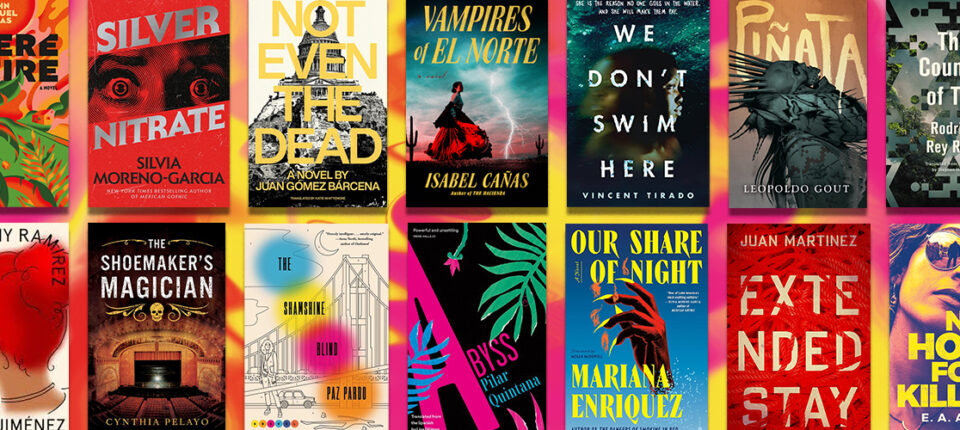It’s been a really great year for new books coming out from Latine authors (including authors based in the United States and writers from across Latin America, because borders aren’t real anyway so why divide everyone up), so I decided to highlight a few of the many new titles hitting shelves this year. Below, you’ll find a mix of horror, noir, psychological thrillers, and historical mysteries, as well as a blend of new and established voices. This article is not pegged to a particular heritage date or holiday, because we shouldn’t need an excuse to read diverse books.

Juan Martinez, Extended Stay
(University of Arizona Press)
El Norte meets Barton Fink in this hotel horror. Two siblings flee from Colombia to the United States and end up at a dingy hotel in Las Vegas where strange figures lurk in the corridors and monsters feed off of the sorrow of the most vulnerable. What follows is both a brilliant horror novel and a sharp critique of capitalism and exploitation.

E. A. Aymar, No Home For Killers
(Thomas & Mercer)
After their brother is found murdered, two sisters must work together to find out the truth behind his murder. One is a strait-laced lawyer, but the other, one of the most charming new characters I’ve come across in a long time, is a cheerful psychopath bent on seeking vengeance (or as she likes to think of herself, a vigilante).
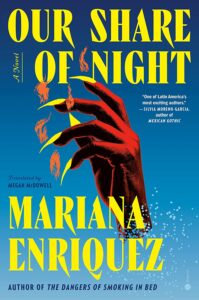
Mariana Enriquez, Our Share of Night
(Hogarth)
What a strange and luminous novel. Mariana Enriquez stunned with her collection The Dangers of Smoking in Bed, and Our Share of Night is just as fantastic (and fantastical). Beginning in Argentina in the years of the dictatorship, Our Share of Night follows a father and son on a grief-driven road trip as they mourn the loss of the woman who united them, her dangerous (and possibly immortal) family close in pursuit. A dark vampiric noir that heralds a new era in South American horror.
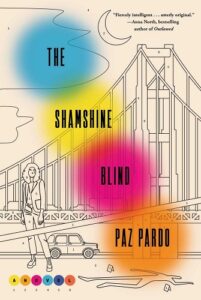
Paz Pardo, The Shamshine Blind
(Atria)
Paz Pardo’s The Shamshine Blind is one of the more exciting debuts to hit in early 2023, a heady mix of high-concept speculative fiction, alternative history, and hardboiled detective fiction. In an alternate 2009, a new chemical compound that can elicit targeted human emotions has been weaponized in war and made ubiquitous for recreational purposes, upending the global and social orders. Amidst the new chaos, a small city enforcement agent gets put on the trail of a new product, a trail that points in the direction of a much broader conspiracy. Pardo’s novel is full of wit and wild invention and is sure to leave readers wanting more. –Dwyer Murphy, CrimeReads Editor-in-Chief
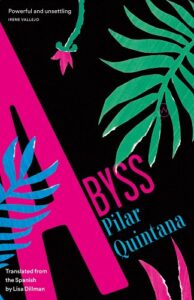
Pilar Quintana, Abyss
(Bitter Lemon)
A young girl grapples with the complexities of the adult world in this moody psychological thriller. Her mother is deeply depressed, flourishing only when tending to her plants or in the arms of her lover, and her father is older, absent, and unable to process emotions. The father finds out about the lover, who disappears, and the family heads to a modern home in the Columbian mountains to recover their intimacy; the home, like the mother, is beautiful and cold, and its former mistress went out one night in her car and never returned…
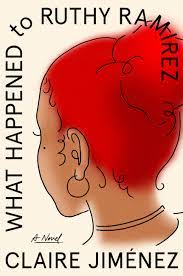
Claire Jiménez, What Happened to Ruthy Ramirez?
(Grand Central)
In this moving take on the vanished woman trope, Ruthy Ramirez disappears on her way home from school at age 13, leaving behind a family in tatters. Twelve years later, she seems to have reappeared—on a trashy reality show called “Catfight.” Is it Ruthy? Where has she been? And will she and her family ever reforge their bonds?
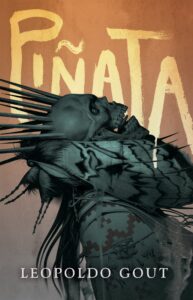
Leopoldo Gout, Piñata
(Tor Nightfire)
This stunningly crafted possession novel is rooted in Aztec history and Nahua religious practice, with an ancient Aztec vessel as the conduit for a powerful spirit seeking to avenge the victims of colonialism. Piñata follows an architect and her two daughters, first in Mexico City, then in New York City, pursued by the spirit all the while, as Gout examines the classic possession tale—an adolescent girl, given powers through her liminal state—and reframes it as a response to racism and the erasure of history and culture.
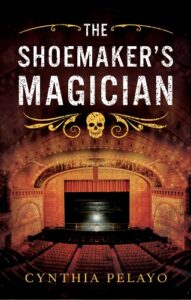
Cynthia Pelayo, The Shoemaker’s Magician
(Agora)
In the second book of Pelayo’s Chicago Saga, an old movie palace and an icon of horror film culture may be the keys to solving a gruesome new homicide. Pelayo brings out the city’s gothic culture with loving care and plots an invigorating mystery with compelling characters. –DM

Gerardo Sámano Córdova, Monstrilio
(Zando)
Part of a new wave of haunted house horror that continues to expand and redefine the genre, Monstrilio is about a woman who creates a monster from a piece of her dead son’s lung, feeding it bloody sacrifices as it grows into the image of her long-gone child. Her monstrilio is loved, cared for, and wholly monstrous. But are not the monsters among us also capable (and deserving) of love? Read this if you liked Sarah Gailey’s Just Like Home!
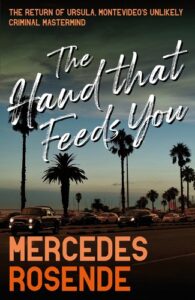
Mercedes Rosende, The Hand that Feeds You
Translated by Tim Gutteridge
(Bitter Lemon)
Set in Montevideo, Uruguay, from where Mercedes Rosende also hails, The Hand That Feeds You is the sequel to Rosende’s much-lauded Crocodile Tears. Ursula, Rosende’s heroine, is now in possession of all the loot from an armored truck, with robbers, cops, and PIs hot in pursuit. Ursula has plenty of tricks up her sleeve, and given the ineptitude of her pursuers, she’s bound to triumph in the end, but how she does it? Comedic thriller gold.
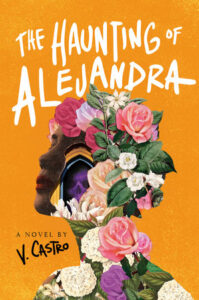
V. Castro, The Haunting of Alejandra
(Del Rey)
V. Castro’s heroine is haunted by the spirit of La Llorena—or, at least, an ancient evil that has found a way to embody a folk legend. She must go to a curandera and process her personal and generational trauma before she can even hope to be free of the demon possessing her, in what also functions as a perfect metaphor for clearing the fog of depression and seeing the societal structures and history that contribute to our present-day malaise.
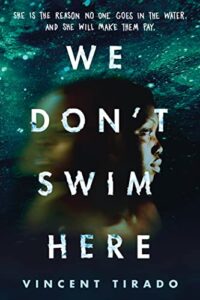
Vincent Tirado, We Don’t Swim Here
(Sourcebooks Fire)
A YA ghost story that’s also a great excuse to stay out of the pool! In Tirado’s latest, a teenage girl who loves swimming moves to a rural town where swimming is Verboten, despite a lovely lake and the shells of several public pools. Why have so m? any of her fellow students worried about water? And why have so many of them died?
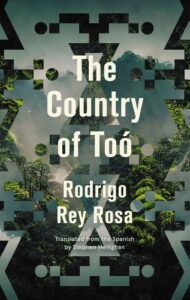
Rodrigo Rey Rosa, The Country of Toó
Translated by Stephen Henighan
(Biblioasis)
The Cobra is a reluctant would-be assassin recruited to take care of a troublesome environmental activist. When he finds himself on the run and presumed dead, he joins the Mayan struggle against the violence of developers, but will he ever see his young child, held hostage by his spymasters, again?
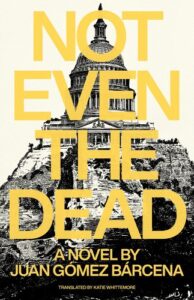
Juan Goméz Barcena, Not Even the Dead
Translated by Katie Whittemore
(Open Letter)
Goméz Barcena’s Not Even the Dead is a hallucinatory trip through the frontier days of northern Mexico, as a soldier who agrees to the proverbial ‘one last job’ finds himself on the heels of a supposed heretic who may just be a prophet. The story travels through a vivid, haunting landscape that seems to transcend time. This is a deeply imagined novel and one you won’t soon forget. –DM
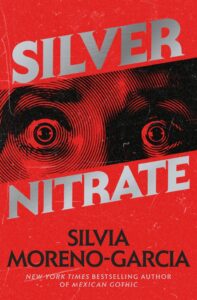
Silvia Moreno-Garcia, Silver Nitrate
(Random House)
Both of Silvia Moreno-Garcia’s parents worked in radio, so perhaps that’s part of the inspiration behind this bonkers ode to sound engineering and the (literal magical) power of the human voice. Silver Nitrate features a sound editor and a has-been actor as they befriend an elderly icon from the Golden Age of Mexican cinema, only to find themselves drawn into a vast conspiracy to harness the magic of the silver screen and bring an occult-obsessed Nazi back from the dead. This book has everything, and I could not recommend it enough!
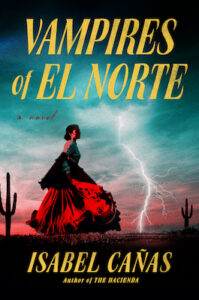
Isabel Cañas, Vampires of El Norte
(Berkley)
I loved Isabel Cañas’ lush, gothic debut, The Hacienda, and I’m psyched for her follow-up, set on the Texas-Mexico border during the 1840s, and featuring two childhood friends reunited in a battle against the undead.

John Manuel Arias, Where There Was Fire
In 1968 Costa Rica, a fruit plantation burns after a family argument. Decades later, the family is still riven by their secrets. What caused the fire? What happened to the family’s patriarch? And what truths will characters learn about themselves, trapped with their thoughts and unpredictable company during an epic hurricane?

